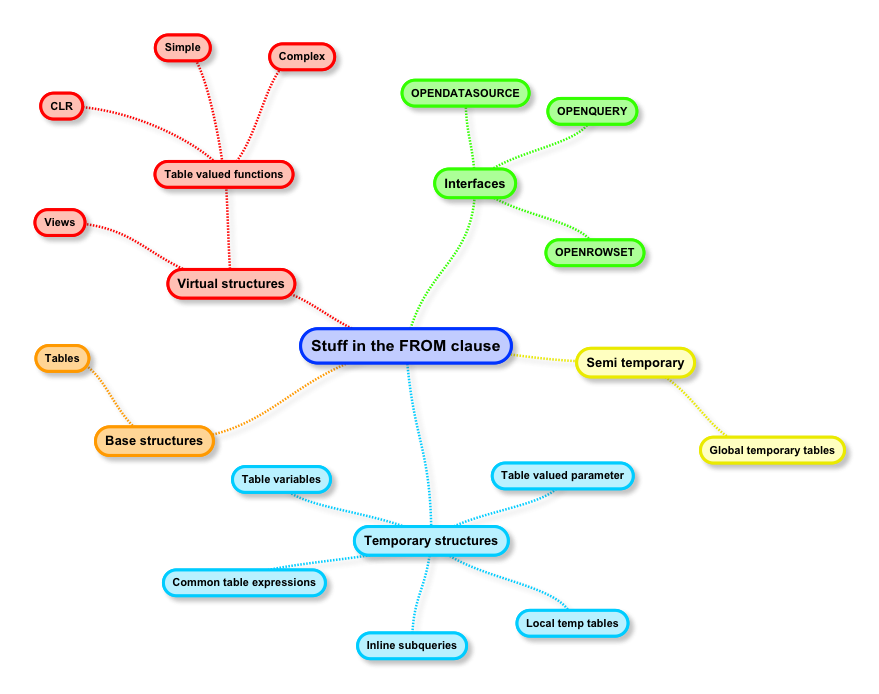A few months ago, our user group started thinking about how we could get new members to start coming to our SQL Server user group meetings; we defined new user as one of two categories:
1: new to databases, or
2. new to SQL Server
In both cases, we realized that we needed to start having new content in our monthly sessions that was targeted specifically for them, so we decided to start adding a brief 10-minute fundamental session to the beginning of each meeting. I chose to do the first one, and selected a topic called Stuff in the FROM clause. I quickly realized that this could be a nice little blog series, so I’m attempting to expand a 10-minute presentation into a four-part series. Below is the mind map for the presentation:

Stuff in the FROM clause: Base Structures
Base Structures as a category name is a bit misleading, because there’s really only one base structure in any relational database: the table. Tables are the core of any relational database; they provide storage for data in rows, arranged by columns. There’s lots of background information on table design, so I won’t spend too much time on it (even that’s too basic for this discussion), but I will highlight some key features about tables:
- From an entity design perspective, a table should represent a set of entities.
- Rows are the un-ordered members of that set
- Columns are the attributes of the entity.
- Table attributes have basic types.
- Tables should have a primary key constraint on one of the columns, which is used to uniquely identify a member of that set.
- Microsoft SQL Server supports a syntax for computed columns, where data for an attribute can be calculated from other attributes.
For Microsoft SQL Server, the CREATE TABLE syntax may be found at: http://msdn.microsoft.com/en-us/library/ms174979.aspx The simplest table creation statement looks like the following:
CREATE TABLE table_name (column_name column_type)
Next: Virtual Structures
